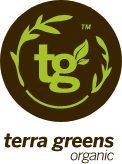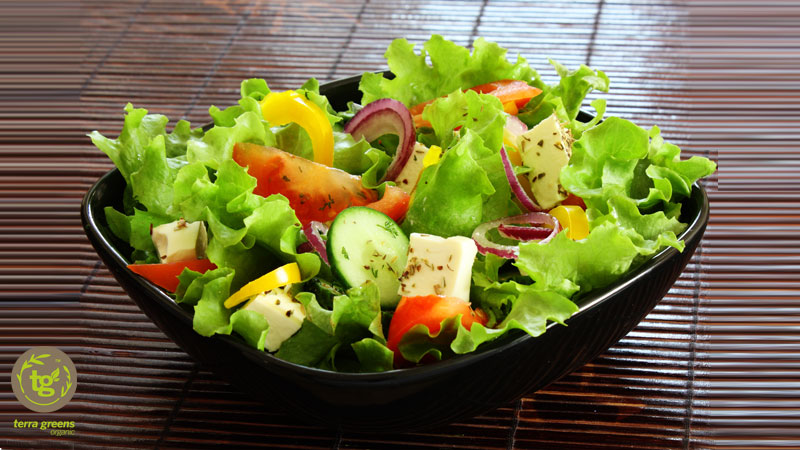A wholesome and healthy lifestyle brings with it several perks – a healthy body, reduced chances of falling ill, weight management, the energy to do more, mood management and greater confidence, to name a few. A healthy diet is at the cornerstone of a healthy life. Eating healthy and following a balanced diet is an integral part of maintaining a healthy lifestyle.
Eating healthy does not necessarily mean following unrealistic dietary regimes or giving up foods that you love. Instead, it is about eating right, eating on time and balancing the various nutritional elements in your meal. A healthy diet will leave you feeling great, energy-packed and of course, healthier. In the midst of the information clutter available on how to eat healthy, it can be overwhelming to make the right dietary choices. However, eating healthy is quite easy; just be mindful of the following points:
1. Begin with baby steps – make small changes
The point of creating a simple eating plan is to avoid setting yourself up for failure of not following a complex diet plan. Create a plan that is a culmination of several small and manageable tasks such as incorporating a salad into your daily diet, or reducing the amount of oil in your food intake. Another easy, yet healthier change is to swap animal fats with vegetable fats (use vegetable oils instead of butter). Reading product labels and nutritional information is another simple way to keep yourself informed about what your food intake consists of. Avoid packaged and processed food items; instead, opt for foods with fresh ingredients.
2. Eat in moderation
Contradictory to what is believed, eating in moderation essentially means consuming only as much food as is required by your body – it should leave you feeling satisfied and not stuffed. The key to moderation is a balanced diet. An ideal balanced diet should consist of carbohydrates, fats, proteins, vitamins, minerals and fibre. Moderation does not mean completely cutting off foods that you love; instead, it is about consuming them in smaller portions with the goal of following a balanced diet. If your meal leaves you feeling unsatisfied, incorporate fruits or more green leafy vegetables.
3. Colour your plate up with vegetables and fruits
Compared to other foods, fruits and vegetables are naturally endowed with the benefits of lower calories and nutrition-packed goodness. They contain generous amounts of antioxidants, fibre, vitamins and minerals. Moreover, they help fill you up, thus eliminating the need to consume junk foods. It is recommended that you eat at least five servings of fruits and vegetables as part of your daily meal plan – a serving could be one apple, two small bananas, or half a cup of fresh vegetables/raw fruit. In order to add variety to your diet, you can include colourful berries to your breakfast, swap your dessert ice-cream for a bowl of fruit or munch on a few carrots instead of opting for that bag of processed chips.
4. Whole foods are healthy foods!
Whole grains are rich sources of healthy carbohydrates, essential fibres and antioxidants. Not only do they provide you with energy, they also help combat heart illnesses and diseases and diabetes, to name a few. Healthy carbohydrates, which are also present in fruits, vegetables and pulses, keep you full for longer because they undergo the digestion process slower than unhealthy carbohydrates (these come from foods such as refined sugar, white rice and white flour). Unlike unhealthy carbs, healthy carbs are not stripped off of their nutrients and fibre. They help maintain blood sugar and insulin levels in the body. To incorporate whole foods and grains into your diet, start small by including portions of a variety of grains such as whole wheat, millet and brown rice. Begin replacing white bread with bread made from whole grains, and white rice with brown rice.
5. Unhealthy fats are a no-no
Your body requires healthy fat to provide adequate nourishment to the various organs and body cells. Just like carbohydrates, there exist healthy and unhealthy fats. Saturated fats come from sources such as red meat and dairy products made from whole milk; trans fats come from fried foods, cookies, processed snacks and other products made from partially hydrogenated vegetable oils. Aim to reduce foods which contain saturated and trans fats and increase the intake of foods with healthy fat.
Polyunsaturated fats and monounsaturated fats are great for your health and help in maintaining the health of your organs, skins, hair and nails. The former includes Omega-3 and Omega-6 fatty acids and are found in fish such as mackerel, salmon, sardines and cod fish, and in walnuts, soybean and flaxseed oils. Monounsaturated fat-rich foods include nuts (hazelnuts, pecans, almonds), plant oils (olive oil and peanut oil) and avocados.
A healthy diet is a cumulative creation of a balanced and moderate diet that is rich in healthy carbohydrates and fats, high-quality protein, fibre, vitamins, mineral and healthy hydration. Such a diet will help you maintain a healthy body and mind, control your hunger cravings, assist in weight management and leave you feeling more active. However, simply following a healthy diet is not enough – for a healthy lifestyle, healthy eating habits must be complemented by sufficient physical activity and daily intake of adequate water.



